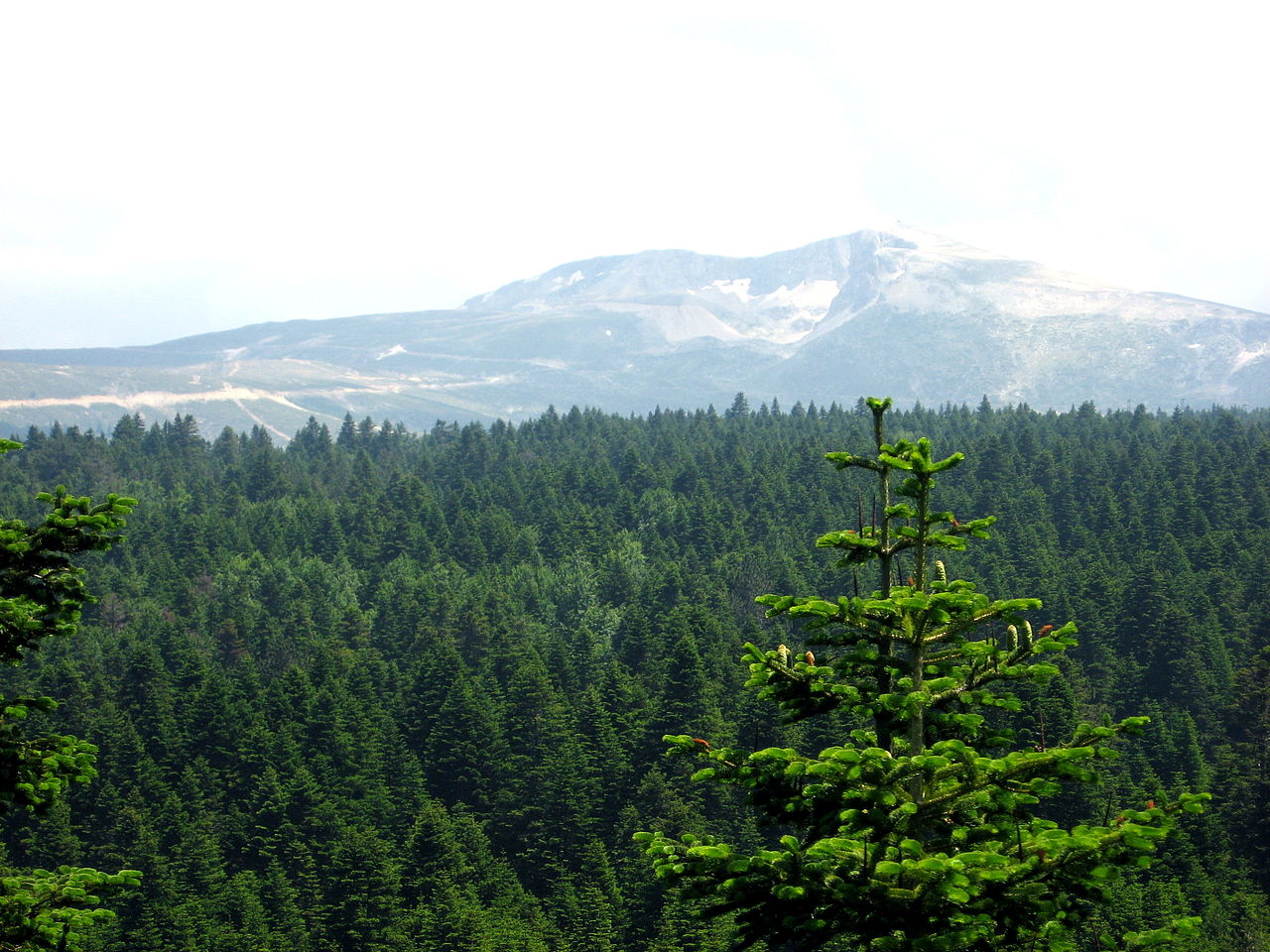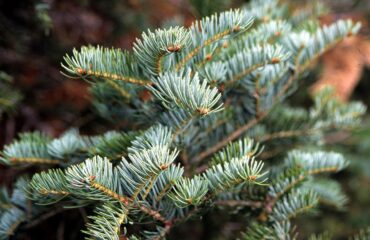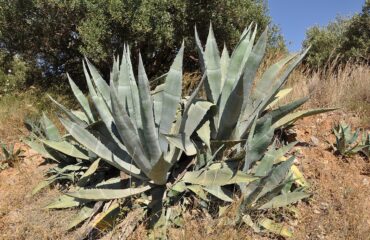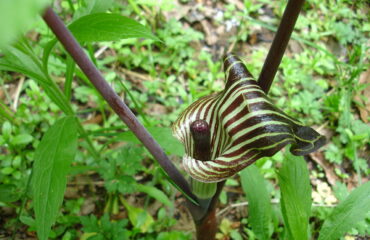Abies nordmanniana, commonly known as Nordmann Fir, is a majestic evergreen conifer native to the mountains of Turkey and the Caucasus. It is prized for its symmetrical, conical shape, dense foliage, and its ability to retain its needles for a long time, making it a popular choice for Christmas trees. The needles are dark green and glossy, with a soft texture and white bands on the underside. The bark is smooth and gray, becoming fissured with age. Nordmann Fir can grow up to 60-100 feet (18-30 meters) in height and 20-30 feet (6-9 meters) in width, making it a prominent feature in large gardens and landscapes.
Preferred Growing Conditions:
- Soil Type: Prefers well-drained, slightly acidic to neutral soil; thrives in loamy or sandy soils rich in organic matter.
- Sunlight: Grows best in full sun to partial shade; young trees benefit from some protection against intense afternoon sunlight.
- Temperature: Hardy in USDA zones 4-7; tolerates cold climates and frost but requires cool, moist conditions for optimal growth.
- Water Needs: Moderate to high; requires regular watering during dry periods, especially when young, and thrives in areas with high humidity.
Abies Nordmanniana (Nordmann Fir) Propagation Methods:
1. Seed Propagation:
Seed propagation is a common and effective method for growing Abies nordmanniana, allowing for natural genetic diversity and strong growth of new trees.
- Seed Collection and Preparation:
- Collect seeds from mature cones in late summer to early autumn once they have turned brown and begun to disintegrate.
- Gently extract the seeds from the cone scales and remove the surrounding wing.
- Seeds require cold stratification to break dormancy. Place seeds in a moist medium (such as sand or peat moss) and refrigerate at around 35-40°F (1.5-4°C) for 30-60 days.
- Sowing Techniques:
- After stratification, sow seeds in seed trays or small pots filled with a light, well-draining seed-starting mix.
- Sow the seeds on the surface of the soil and cover lightly with a thin layer of soil or sand.
- Keep the soil consistently moist but not waterlogged.
- Place the trays in a bright location with temperatures around 65-70°F (18-21°C).
- Germination Requirements:
- Seeds typically germinate within 4-8 weeks after stratification.
- Once seedlings emerge, provide bright, indirect light and maintain consistent moisture.
- When seedlings have developed several true leaves and are sturdy enough to handle, transplant them into individual pots.
- Transplanting Seedlings:
- When seedlings have grown larger and stronger, they can be transplanted into the garden or larger pots.
- Choose a planting site with full sun to partial shade and well-draining soil.
- Space the plants at least 10-20 feet apart to accommodate their mature size.
2. Cuttings:
Propagating Abies nordmanniana from cuttings can be challenging due to its slow rooting characteristics, but it can be used to clone specific cultivars or maintain the traits of a particular tree.
- Types of Cuttings:
- Use semi-hardwood cuttings taken in late summer or early autumn when the plant is not actively growing.
- Preparation:
- Select healthy, non-flowering shoots and cut 4-6 inch sections just below a node.
- Remove the lower leaves and dip the cut end in rooting hormone to encourage faster rooting.
- Planting:
- Insert the cuttings into a well-draining potting mix, such as a blend of peat and perlite or a commercial rooting mix.
- Water lightly to settle the soil and place the pots in a bright, indirect light location.
- Cover the pots with a plastic bag or place in a propagation tray with a clear lid to maintain humidity.
- Rooting:
- Roots should begin to form within 2-4 months, though rooting can be slow and variable.
- Once roots are established and new growth appears, gradually acclimate the cuttings to lower humidity.
- Transplant the rooted cuttings into individual pots or directly into the garden.
3. Grafting:
Grafting is often used for propagating Abies nordmanniana, especially for maintaining the characteristics of specific cultivars or producing uniform nursery stock.
- Types of Grafting:
- Side veneer grafting or whip-and-tongue grafting are commonly used for Nordmann Fir.
- Preparation:
- Select a healthy rootstock and a compatible scion from the desired cultivar.
- The scion should be a young, dormant shoot with several buds.
- Process:
- Make a clean cut on both the rootstock and the scion, creating matching cuts for the chosen grafting method.
- Align the cuts so that the cambium layers of both parts are in contact.
- Secure the graft with grafting tape or rubber bands and seal with grafting wax to prevent drying out.
- Place the grafted plant in a cool, shaded area until the union is secure and new growth begins.
- Care for Grafted Plants:
- Once the graft has taken and new growth appears, gradually acclimate the plant to outdoor conditions.
- Provide regular watering and protect from strong winds and harsh sunlight.
4. Air Layering:
Air layering can be used to propagate Abies nordmanniana, particularly for mature branches that can be induced to root while still attached to the parent tree.
- Timing:
- Best done in spring or early summer when the plant is actively growing.
- Method:
- Select a healthy, flexible branch and make a shallow cut or wound around the branch about 12-18 inches from the tip.
- Remove a ring of bark (girdling) to expose the cambium layer.
- Apply rooting hormone to the exposed area to encourage root formation.
- Wrap the wounded area with moist sphagnum moss and cover it with plastic wrap or aluminum foil to retain moisture.
- Secure the wrap with ties or rubber bands and keep the moss moist.
- Rooting and Separation:
- Roots should begin to form within a few months.
- Once a good root system has developed, cut the branch below the rooted section and carefully remove the wrap.
- Plant the rooted section in a pot or directly in the garden, ensuring the roots are well-covered and watered thoroughly.
Care for Newly Propagated Plants:
- Place new plants in a location with full sun to partial shade and well-draining soil.
- Water regularly during the growing season, especially in the first few years after planting.
- Protect young trees from pests and diseases, and provide support if needed to prevent wind damage.
- Apply a balanced, slow-release fertilizer in early spring to encourage healthy growth and development.
- Mulch around the base to retain moisture and regulate temperature.
Common Challenges and Solutions:
- Needle Cast Diseases: Monitor for signs of yellowing or dropping needles. Ensure good air circulation and avoid overhead watering. Treat with fungicides if necessary.
- Aphids and Scale Insects: Monitor for common pests and treat infestations with insecticidal soap or neem oil.
- Root Rot: Ensure good drainage and avoid waterlogging, especially in heavy soils.
Additional Tips:
- Prune young trees to shape them and remove any dead or damaged branches.
- Mulch around the base to retain moisture and suppress weeds.
- Nordmann Firs are slow-growing and require patience, so consider their long-term growth and spacing when planting.
- These trees thrive in cool, moist environments and benefit from regular watering during dry periods, especially in hot climates.
Conclusion:
Propagating Abies nordmanniana provides a rewarding opportunity to grow these elegant and enduring trees in your garden or landscape. Whether you choose to start from seeds, use cuttings, graft, or try air layering, with proper care and attention, Nordmann Firs will thrive and become a majestic feature in any setting.
Share this article



